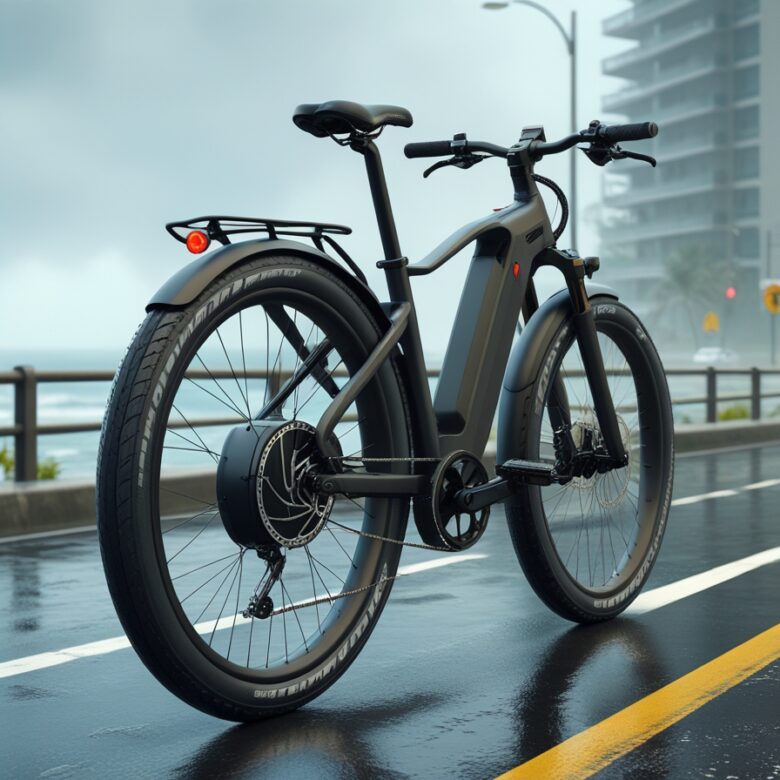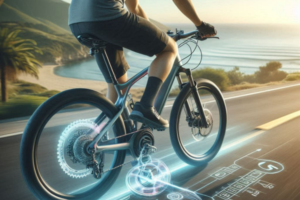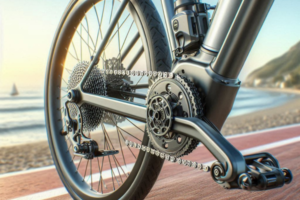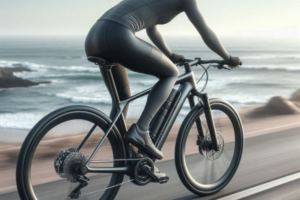🌧️ Why Tire Choice Matters in Humid Climates
Riding an electric bicycle in humid climates presents unique challenges that directly impact your speed and stability. The combination of moisture, slippery surfaces, and variable terrain requires careful consideration when selecting the right tires. Choosing the appropriate tires ensures not only a smoother ride but also enhances safety and performance.
💡 Understanding the Impact of Humidity on Tire Performance
In humid environments, roads often become slick due to moisture accumulation, increasing the risk of reduced traction. Tires that perform well in dry conditions may not offer the same grip on wet surfaces. Therefore, it’s crucial to select tires specifically designed to handle the challenges posed by humidity.
🔍 Key Features to Look for in Tires for Humid Climates
- Tread Pattern: Opt for tires with deeper grooves and siping to channel water away and maintain contact with the road.
- Rubber Compound: Softer rubber compounds can provide better grip on wet surfaces, enhancing stability.
- Width: Wider tires can offer more surface area contact, improving traction and control.
- Puncture Resistance: Humid conditions can lead to debris sticking to tires; choosing puncture-resistant options can prevent flats.
🛠️ Recommended Tire Options
Several tire models are well-suited for humid climates. For instance, the Schwalbe Marathon Plus is known for its puncture resistance and reliable performance in various conditions. The Continental Contact Urban offers excellent grip on wet and dry pavement, making it a versatile choice for city commuting. :contentReference[oaicite:3]{index=3}
📊 Comparison Table: Tire Features for Humid Climates
| Tire Model | Tread Pattern | Rubber Compound | Puncture Resistance |
|---|---|---|---|
| Schwalbe Marathon Plus | Deep grooves | Durable rubber | High |
| Continental Contact Urban | Urban-oriented | Soft compound | Moderate |
💡 Insight: Selecting the right tire is crucial for maintaining speed and stability in humid conditions. Prioritize features that enhance grip and prevent punctures.
📏 How Tire Size and Pressure Influence Speed and Grip in Humid Conditions
In a humid environment, the smallest details in your e-bike setup can have the biggest effects. Tire size and pressure, often overlooked by casual riders, are critical components for maintaining both speed and control. Choosing the wrong combination can result in slipping, poor cornering, unnecessary drag, and a less efficient ride.
📐 Tire Width: Finding the Right Balance
Wider tires provide more surface contact with the road, which translates to improved traction—especially important on wet or damp pavement. However, going too wide can introduce rolling resistance that reduces speed and drains your battery faster. Narrower tires offer speed advantages on dry pavement but may become unstable on slick surfaces.
- 🛞 Ideal width range: For humid climates, tires between 1.75″ and 2.35″ offer a good balance between control and performance.
- 🌊 Wider tires (2.3″+): Best for off-road or rainy city conditions but may reduce speed.
- 🌬️ Narrow tires (≤1.5″): Fast on dry roads, but risky on wet pavement due to reduced grip area.
🎯 Tire Pressure: Stability Starts with Precision
Humidity impacts air density and temperature, which in turn affects your tire’s internal pressure. When riding on slick surfaces, slightly lowering the pressure improves grip by allowing more rubber to conform to road texture. Overinflated tires in a humid climate may feel fast, but they often lose traction during turns or sudden stops.
- 📉 Lower PSI: Better grip but slightly more rolling resistance.
- 📈 Higher PSI: Reduced grip but more speed—best for dry climates.
- 📊 Recommended range: 40–60 PSI for most humid environments, depending on rider weight and tire width.
📊 Table: Tire Pressure vs. Performance in Humid Environments
| PSI Level | Speed | Grip on Wet Surfaces | Comfort |
|---|---|---|---|
| 35–45 PSI | Moderate | Excellent | High |
| 46–55 PSI | High | Moderate | Medium |
| 56–65 PSI | Very High | Low | Low |
🎨 Visual Analogy: Tire Pressure is Like Shoe Fit
Imagine running in shoes that are too stiff—they might be fast, but you’ll slide on wet grass and feel every bump. Tires work the same way. In humid climates, flexibility and grip often outperform sheer speed. A properly inflated tire is like a well-fitted sneaker: balanced, responsive, and confident in every step.
💡 Pro Tip: Use a digital pressure gauge weekly. Humid air causes PSI to fluctuate, even when tires look fine to the eye.
💡 Reflection: Performance is a balance. The right tire pressure turns slippery roads into smooth sails.
⚠️ Common Mistakes When Choosing Tires for Humid Climates
In the pursuit of speed and efficiency, many riders unintentionally compromise safety and traction by making poor tire choices. Humid environments demand a more thoughtful approach, yet many e-bike users fall into traps that can reduce speed, cause instability, or even lead to dangerous slips. Let’s look at the most frequent missteps and how to avoid them.
🛑 Top Tire-Related Mistakes in Humid Conditions
- Using slick tires designed for dry climates: These tires may offer low rolling resistance but provide little to no grip on wet surfaces, increasing your risk of skidding.
- Overinflating tires in hopes of going faster: High PSI can harden the tire, reducing surface contact and making it harder to grip wet pavement.
- Ignoring tread depth: Worn-out tread can’t channel water away, leading to hydroplaning even at moderate speeds.
- Choosing aesthetics over function: Tires that “look cool” often lack the compound softness or tread detail necessary for humid terrain performance.
- Assuming any tire fits any e-bike: Weight and torque output from electric motors require specific tire reinforcements for both safety and efficiency.
📊 Table: Mistake vs. Real-World Consequence
| Mistake | Effect on Ride | Speed Impact | Risk Level |
|---|---|---|---|
| Slick tire on wet road | Slippage on turns | Inconsistent | High |
| Overinflation | Reduced grip | Short-term gain, long-term loss | Medium |
| Worn tread | Poor water evacuation | Lower average speed | High |
📋 Correction Checklist for Smart Riders
- ☐ Inspect tire tread at least every two weeks
- ☐ Choose tires with siping or grooved patterns
- ☐ Adjust tire pressure based on humidity and terrain
- ☐ Replace tires at the first sign of bald spots
- ☐ Match tire type to your motor’s torque output
🌧️ A Visual Analogy: Tires Are Your Umbrella
In a humid environment, your tires are like your umbrella. A sleek, fashionable umbrella may look great—but if it leaks, it’s useless. Your tires should prioritize protection and function first. Let them be the shield that cuts through wetness, keeping your ride steady, not stylishly slippery.
💡 Pro Tip: Always do a “finger press” test after a rain ride—if your tire feels overly stiff or too smooth, it’s time to adjust pressure or upgrade the compound.
💡 Reflection: Tire mistakes don’t show up in your stats—but you feel them in every turn, bump, and unexpected skid. Prevention is the real power.
🧰 Weekly Tire Maintenance Routine for Humid Conditions
In humid climates, tire care isn’t just about aesthetics or durability—it’s about safety and consistent performance. Moisture, dust, and road debris accumulate more quickly and invisibly when the air is wet, leading to subtle but significant changes in grip and rolling resistance. A simple weekly routine can extend tire life, preserve speed, and prevent avoidable accidents.
📅 Your Tire Health Weekly Checklist
Set a reminder to perform these five essential tire checks every week. They take less than 15 minutes, and they could prevent days of trouble or loss in performance:
- 🔍 Inspect tread depth: Use a small coin or tread tool to check for excessive wear, bald spots, or uneven patterns.
- 🧽 Clean sidewalls and tread surface: Moisture plus dirt = slow, silent damage. A quick wipe with a microfiber cloth does wonders.
- 🌡️ Check pressure with a digital gauge: Humidity and temperature fluctuations affect PSI more than you think—adjust weekly.
- 🔄 Rotate tires (if possible): On dual-motor e-bikes or rear-heavy setups, consider rotating tires every 2–4 weeks to balance wear.
- 📷 Log tire condition: Take a quick photo each week to monitor changes—great for visual comparisons over time.
📊 Table: Weekly Maintenance Benefits
| Routine Task | Short-Term Benefit | Long-Term Impact |
|---|---|---|
| Cleaning tread and sidewalls | Improved grip and looks | Slows wear, prevents rot |
| Checking PSI regularly | Better speed and comfort | Avoids premature blowouts |
| Inspecting tread depth | Safer braking in rain | Ensures legal, safe riding |
🔧 Essential Tools for Coastal and Humid Riding
- 🧼 Microfiber cloth + mild detergent: Gently removes moisture stains and grime.
- 📏 Tread depth gauge or coin: Track millimeters of wear consistently.
- 🔋 Digital tire pressure gauge: Provides accurate PSI across various temperatures.
- 🪣 Small bucket & soft brush: For weekly cleaning without damaging tire rubber.
🌧️ Visual Analogy: Tires as Your Grip Gloves
Think of your tires like the gloves of your ride. In dry weather, you might not notice the details. But when humidity hits, everything gets slippery—and your grip becomes everything. Would you trust worn-out gloves in the rain? The same logic applies to tires.
💡 Pro Tip: After every rainy ride, rinse your tires with clean water. It removes salt, oil, and grit that silently wear down the rubber.
💡 Reflection: Speed starts where the tire meets the road—but performance begins where care meets consistency.
💬 Frequently Asked Questions (FAQs) About Tires and Humidity
Do wider tires perform better in wet conditions?
Generally, yes. Wider tires offer more surface contact, which improves grip on damp or uneven surfaces. However, it’s important to balance width with rolling resistance. For most humid climates, 1.75″ to 2.35″ is ideal for both speed and control.
How often should I check tire pressure in humid climates?
At least once a week. Humidity and temperature changes can cause air expansion or loss, affecting your bike’s handling and traction. A digital pressure gauge is a must-have tool for humid or coastal areas.
Are there specific tires made for rainy or tropical environments?
Yes. Some tires are designed with water-channeling tread patterns, soft rubber compounds for enhanced wet grip, and added puncture resistance. Brands like Schwalbe, Continental, and Vittoria offer reliable models for humid zones. Always check the manufacturer’s specs for climate suitability.
Can overinflating my tires help me go faster?
Not in humid conditions. Overinflation may reduce rolling resistance, but it also reduces grip—especially dangerous on slick roads. Slightly lower PSI (within manufacturer guidelines) offers better traction and still supports efficient speed. Speed means nothing if you’re not in control.
What’s the best way to store tires between seasons in coastal cities?
Store them in a cool, dry, and ventilated area. Avoid direct sunlight and sealed plastic bags that trap moisture. A tire rack or wall hook inside a dry utility room is ideal. Add silica gel packs nearby to help absorb ambient humidity.
How long do tires typically last in humid conditions?
It depends on mileage, riding surface, and maintenance. On average, e-bike tires in humid climates may last 1,500 to 3,000 km (930–1,860 miles). Regular inspections, cleaning, and proper pressure can extend their lifespan significantly.
💖 Final Thoughts: Grip the Road, Glide Through the Weather
Speed doesn’t always come from a stronger motor or a lighter frame. Sometimes, it comes from the silent confidence of the right tire under your feet. In humid climates, where every corner hides a puddle and every morning begins with moisture in the air, your tires are the quiet heroes of your ride.
The right choice means fewer slips, better acceleration, and the freedom to move boldly—no matter the weather. With just a little knowledge and care, you’ll stay ahead of the curve and ride through the storm like it’s part of your rhythm. Let your tires work with the environment, not against it. Let them speak through the way you move—smooth, grounded, and full of intent.
💡 Inspiration: In a world of moisture and movement, true speed is born from control—and control begins with connection.
🌍 Join the Conversation: What Keeps You Rolling?
Do you ride in a humid or tropical environment? Have you discovered the perfect tire for your route? Or maybe you’ve learned something the hard way about tire pressure or grip on rainy days?
We’d love to hear from you:
🛞 What tire model keeps you stable?
🌧️ What’s your wet-weather pressure sweet spot?
🧼 What cleaning trick keeps your tread looking new?
Leave a comment and help create a space of shared knowledge and support. Your insight could help someone avoid a fall, improve their speed, or simply enjoy the ride more. Because when riders share wisdom, we all ride stronger, safer, and faster—together. 🚴♀️💬🌎



